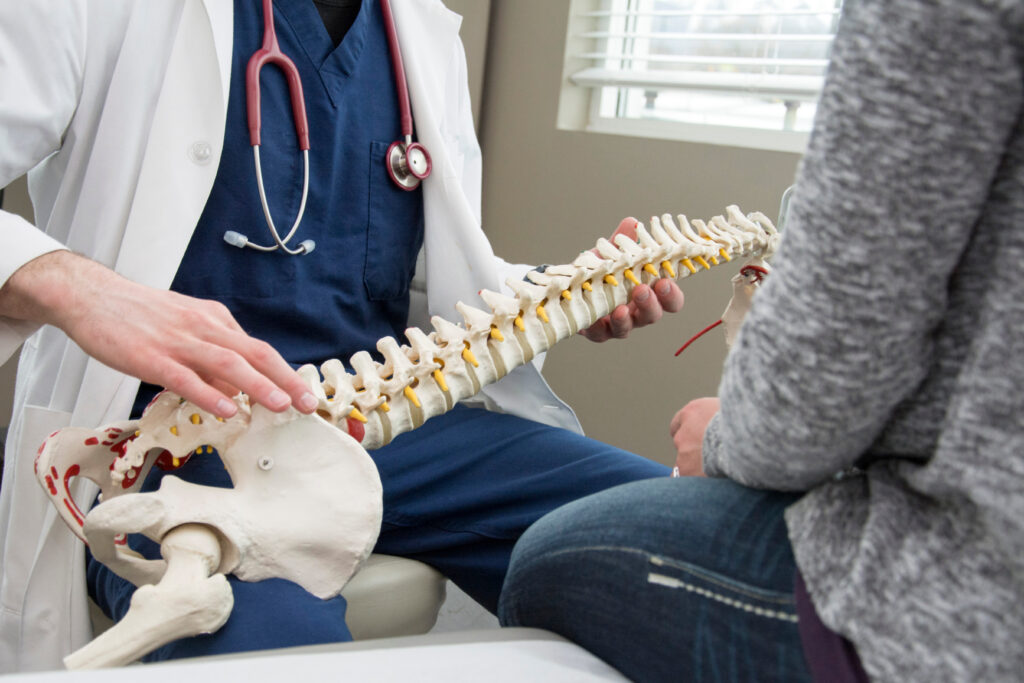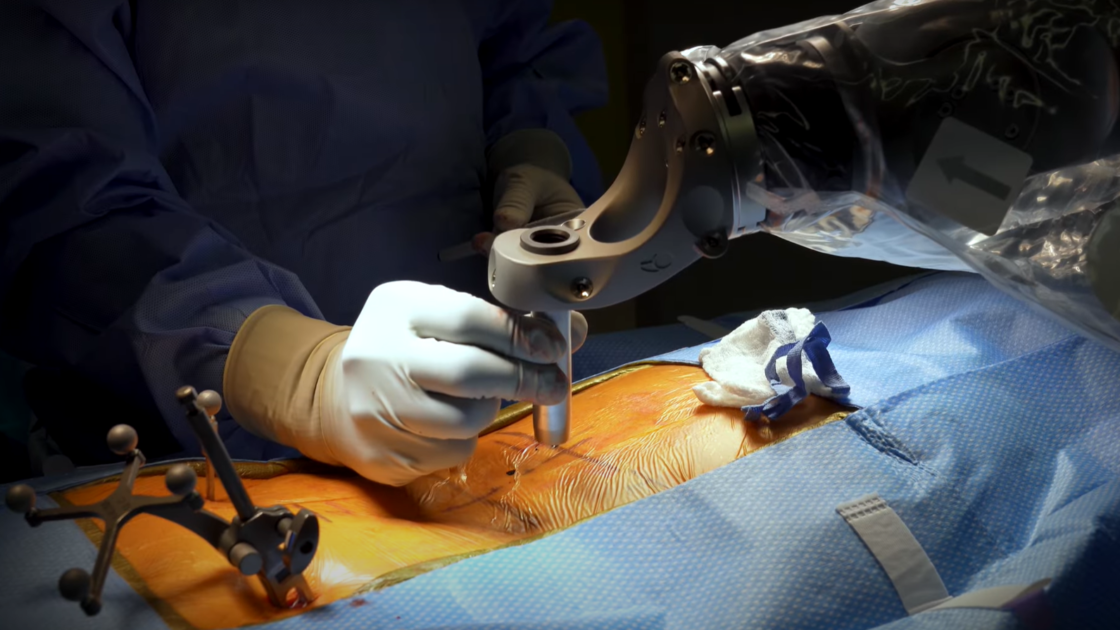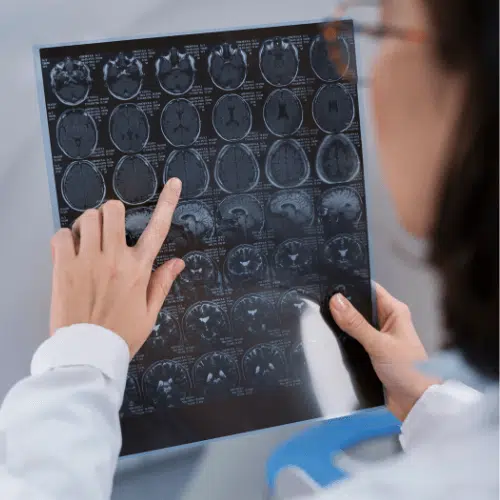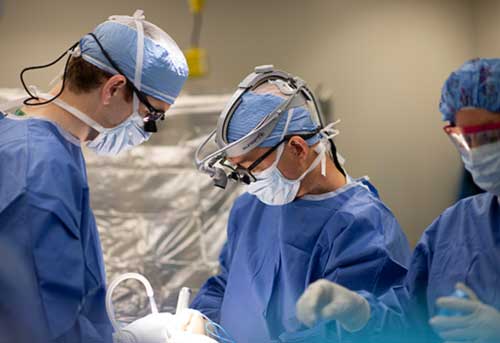The Most Recent Advancements by the Best Spine Surgeons in St Louis MO
The Most Recent Advancements by the Best Spine Surgeons in St Louis MO
Blog Article
An Introduction of Back Conditions That Frequently Outcome in Surgical Therapies
Back problems such as herniated discs, spinal stenosis, and degenerative disc condition regularly demand surgical interventions when conservative therapies stop working to ease consistent symptoms. Recognizing the subtleties of each condition and the equivalent medical options, such as discectomy or back blend, is vital for efficient management.
Herniated Discs
Although many individuals with herniated discs may locate relief through traditional treatments, surgery becomes a necessary factor to consider when signs and symptoms worsen or persist - best spine surgeons in st louis mo. A herniated disc takes place when the soft internal gel of a spinal disc sticks out via its outer layer, possibly leading and pressing neighboring nerves to discomfort, numbness, or weakness in the extremities
Conservative administration typically consists of physical therapy, pain medicines, and corticosteroid injections, which intend to reduce swelling and boost feature. Nonetheless, in cases where these methods fail to reduce devastating symptoms, surgical choices might be explored.
The most usual procedure for herniated discs is a discectomy, which involves the removal of the herniated part of the disc to soothe pressure on the affected nerve root. In a lot more extreme instances, back fusion may be required to support the impacted vertebrae.
Individuals are suggested to discuss the potential risks and advantages of surgical treatment with their doctor to make a notified decision. Eventually, the objective of any medical intervention is to restore function, ease discomfort, and boost overall lifestyle for people struggling with herniated discs.
Back Constriction
Spinal stenosis happens when the rooms within the spinal column slim, causing raised pressure on the spine cable and nerves. This condition can create in numerous areas of the spinal column, including the lumbar and cervical locations, typically because of age-related changes, such as degenerative disc disease, joint inflammation, or enlarging of ligaments.
People with spinal stenosis might provide with symptoms that consist of pain, tingling, tingling, or weak point, mostly in the legs or arms. These symptoms can be aggravated by tasks that include standing or walking, usually leading people to seek alleviation with conservative therapies like physical treatment, medicines, or epidural steroid injections.
However, when these non-surgical treatments stop working to offer sufficient alleviation, surgical options might be thought about. Usual operations for back constriction include laminectomy, which involves the removal of component of the vertebra to minimize pressure, and spine combination, which supports the affected area. The choice to pursue surgery is usually based upon the extent of signs, the level of functional disability, and the overall wellness of the client. Trigger medical diagnosis and monitoring are crucial to avoid further neurological compromise and enhance lifestyle.
Spondylolisthesis
Spondylolisthesis takes place when one vertebra slips forward over one more, bring about misalignment of the spine. This condition can result from different variables, consisting of congenital problems, trauma, or degenerative adjustments in the back. It is most commonly observed in the back area, particularly at the L4-L5 and L5-S1 degrees.

Therapy choices differ based upon the severity of the slippage and the signs presented. Conservative measures, consisting of physical therapy, discomfort administration, and activity modification, are typically the first line of defense. However, when non-surgical strategies fail to relieve signs and symptoms or when substantial nerve compression is present, medical intervention might be called for. Surgical options can include back combination or decompression treatments, focused on recovering alignment and alleviating neurological symptoms. Early diagnosis and appropriate administration are crucial for optimal results in clients with spondylolisthesis.
Degenerative Disc Condition

The condition can be identified through a combination of medical examination, imaging studies, and patient history. When these methods fail to give sufficient alleviation, surgical treatments might be thought about.
Surgical choices for DDD may include back blend or fabricated disc replacement, focused on stabilizing the influenced sector and easing pain (best spine surgeons in st louis mo). Eventually, the selection of treatment is embellished, taking right into account the extent of the problem, client health, and way of living aspects
Spinal Lumps

Spine growths can arise from different elements, including genetic proneness, environmental influences, and pre-existing clinical problems. Individuals may present with an array of symptoms, including localized pain, neurological deficiencies, weak point, or changes in digestive tract and bladder feature, depending on the tumor's dimension and area.
Surgical intervention may be called for to reduce signs and symptoms, get a biopsy, or remove the lump completely. The goal of surgical procedure is commonly to decompress neural components and support the spine. Early detection and treatment are critical for maximizing results in clients with spinal tumors.
Conclusion
In summary, spinal column conditions such as herniated discs, spinal stenosis, spondylolisthesis, degenerative disc disease, and spine growths regularly necessitate surgical treatment as a result of their potential to trigger substantial pain and practical impairment. While conventional therapies might offer momentary alleviation, surgical options end up being critical when signs and symptoms get worse or linger. Timely diagnosis and intervention play a critical role in restoring function and enhancing the quality of life for affected individuals, underscoring the value browse around these guys of detailed spine treatment.

Report this page